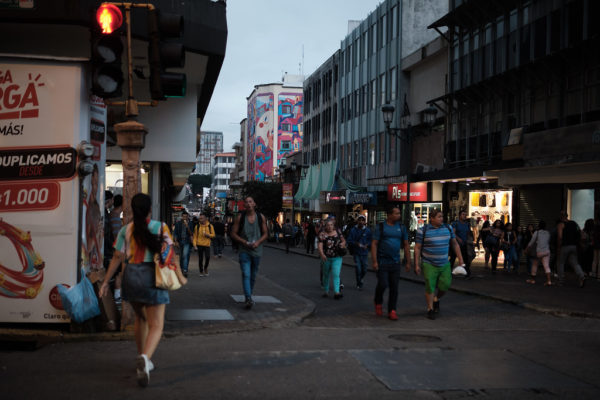Study Offers Clearer Picture about Nicaraguan Exiles
Children accompany 31% of the exiles

Nicaraguan expert notes that the population “hasn’t had” psychological support, although they’ve been exposed to “high levels of violence”.
Por EFE (Confidencial)
HAVANA TIMES – Approximately 31.5% of Nicaraguan exiles in Costa Rica are accompanied by children or adolescents. This finding comes from an investigation recently carried out by the Arias Foundation for Peace and Human Progress. Of these children and teens, 76.7% attend school.
Elvira Cuadra, a Nicaraguan sociologist, summarized the report’s conclusions, including the situation of the minors, in a press conference. Of 500 people interviewed for the study, 31.5% affirmed that they were in Costa Rica with their children.
Additionally, of the minors attending classes, 64% are in preschool or elementary school and 35% in middle or high school. Only 22% have had any kind of psycho-social support, the report indicates.
“This is a sensitive and vulnerable population. They’ve lived through a whole process of uprooting. Specifically, they experienced a process of forced displacement. During this time, they haven’t enjoyed any psycho-social accompaniment,although they’ve been exposed to high levels of violence,” Cuadra explained.
Survey conducted amid the pandemic
Young people (16 to 30) represent 56.3% of the exiled Nicaraguans. Forty-four percent of them say they tried to enter the Costa Rican educational system. Of these, however, 75.5% encountered difficulties in incorporating into the universities. Of the total number of young people, only 23% received any psychological support.
In addition, 63.5% of those consulted stated they have dependents in Nicaragua. An additional 45.8% report dependents in Costa Rica.
Evira Cuadra pointed out that the survey was conducted during the second trimester of 2020. This was during “the most critical phase of the Coronavirus pandemic”. Hence, it reflects a “new level of difficulty” for those in Costa Rica.
Among other data: the majority of those exiled (56.3%) are between 16 and 30. The next largest category is between 31 and 45 years old. These represent 31.1% of the exiles. Other age groups made up 12.6% of the study.
Just over 50% identify as heterosexual males, and 38.8% as heterosexual females. Eleven percent identified as LGBTQI.
The majority had graduated from high school or college, or had professional training. Nonetheless, the same majority were working in service, sales, construction or agriculture. A still greater proportion were without employment.
Expectations of returning
With respect to their immigration status, 42.6% had appointments for an asylum eligibility interview. 20.7% have a refugee ID card. An additional 15.9% were awaiting a final resolution to their case, while 7.4% were waiting for an appointment to apply for asylum.
Meanwhile, 6.2% were approved for asylum, and 1% said that immigration authorities had rejected their request.
“One of the greatest difficulties is tied to the slow pace in the immigration offices. A very high percentage of exiles who filed immigration petitions in 2018, still haven’t obtained any resolution in 2020. They still don’t know if the response is positive, or if they are rejected,” Elvira Cuadra noted.
According to the survey, 69% of the Nicaraguan exiles in Costa Rica hope to return to their country of origin when the socio-political conditions and safety improve.





